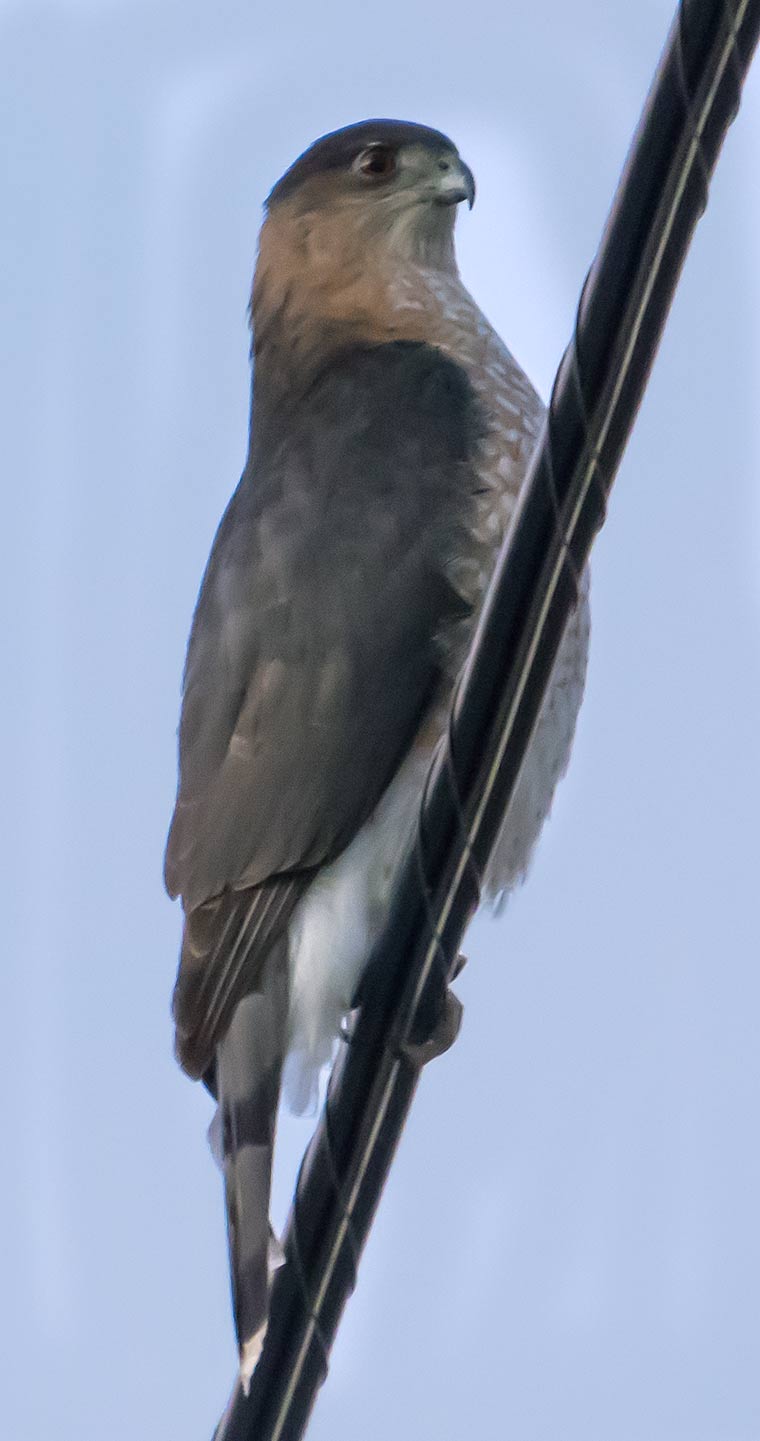We were driving to town the other day when we spotted a hawk on a cable between two power poles. The bird was perched along a fairly busy street, and there was no good place to pull off to try to get a picture. In addition, it was getting late and the light was fading away. We were lucky, however, in that the bird was very patient. We made a total of four passes, each time trying to get a picture from the window, and each time being forced to move on by approaching cars.
This is the best picture that I managed to get. I am sure it is species of Accipter. either a Sharp-shinned Hawk (Accipter stratus) or a Cooper’s Hawk (Accipter cooperii). These two species are difficult to distinguish with certainty in the field. This one appears to have a relatively short tail and white undertail feathers (coverts), which are Sharp-shinned characters, but the clear boundary between the cap and the nape is characteristic of Cooper’s. Females are quite a bit larger than males in each of the two species. The size is difficult to judge on this one bird in isolation, but I am sure this one is too big to be a male Sharp-shinned, which are only about the size of a Blue Jay. Female Sharp-shinned and male Cooper’s can be similar in size, and this bird could thus be either species. I am reasonably sure this one is a Cooper’s, but I welcome any suggestions from readers.
Accipitors primarily eat other birds. They are expert fliers through thick cover. They may also hunt from an ambush perch. They are not often seen perching in prominent positions as do our common Buteo species (the Red-tailed Hawk Buteo jamacensis, and the Red-shouldered Hawk, Buteo lineatus). Usually Accipters are seen flying high overhead only in migration. They are not uncommon in our area, however, just less commonly seen than the Buteos.
Occasionally an Accipiter will visit bird feeders and pick off some of the small birds you are trying to feed. A visit by an Accipiter will be sure to cause a wave of panic in nearby birds. If this gets to be a problem, you should take down the feeder for a week or so. The hawk will go somewhere else and then you can resume feeding.
Discover more from A Naturalist's Journal
Subscribe to get the latest posts to your email.


What a beautiful bird! It is amazing how plentiful hawks are even within the city of Atlanta. I have noticed that they are often in groups, something that I would not have expected. And then there are their calls…